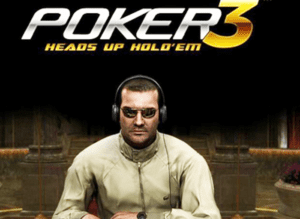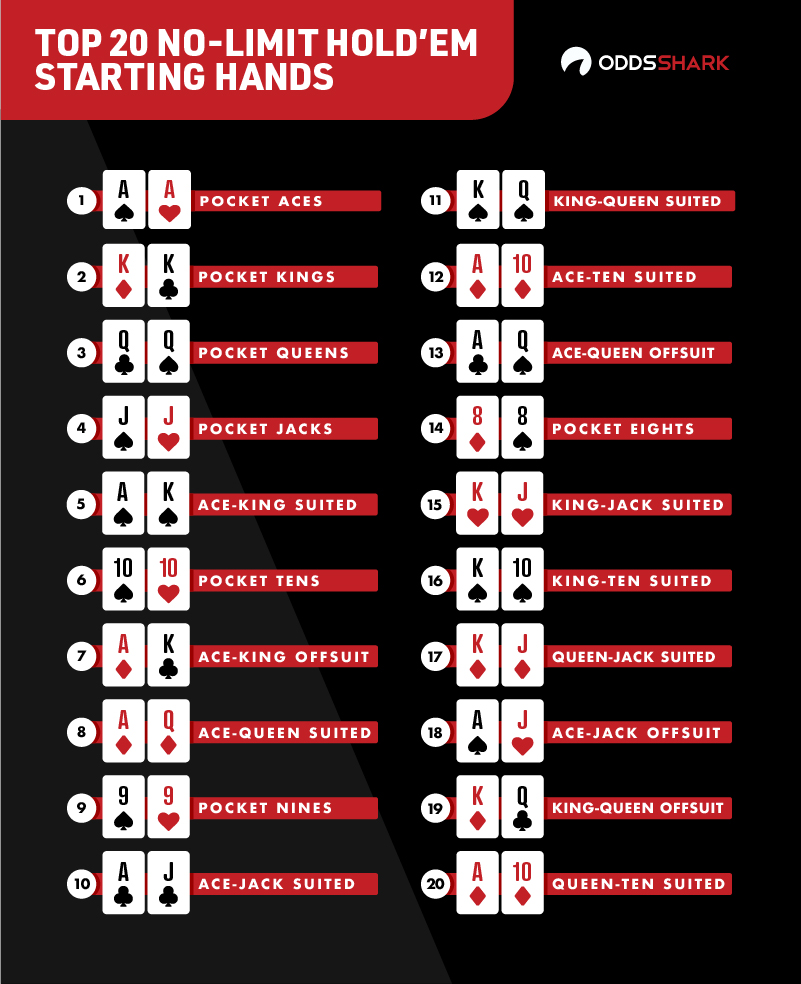Texas Holdem Poker Heads Up
Play Texas Holdem vs Advanced Ai Bots. Bankroll: $ 100000 Welcome anonymous.
Another recorded live session of heads up play in NLTH Poker. Www.mypokercoach.co.uk explains the differing strategy in heads up poker games and how to play. Kongregate free online game Texas Hold 'Em Poker: Heads Up - Improve your poker game! Play no-limit Texas Hold 'em poker in a 3D first-person perspective a. Introduction to Heads Up SNG Poker. Heads-up sit and go tournaments are played with two players, the small-blind being assigned to one player, and the big-blind to the other.
Once heads up is achieved in a home game or pub poker tournament, the most common questions that I hear is, “who goes first?” “who gets dealt the first card?” or “who has the button?” In fact, the most common time that gameplay rule violations occur at the poker table is when I am down to heads up. This is because the rules for heads to head or one on one play in Texas Hold’em can be a bit confusing.
According to heads up poker rules, the dealer posts the small blind and the other player posts the big blind. The first card is dealt to the player in the Big Blind. The dealer acts first pre-flop and the big blind acts first on the flop, turn, and river. The dealer always goes last on the flop, turn, and river.
Why Does the Dealer Post the Small Blind?
If the blinds were reversed and the player on the button posted the big blind, the rules for order of play would be violated. In Texas Hold’em, the Big Blind is required to act last before the flop. Therefore, by default, the player on the button must post the Small Blind in heads-up play.
Additionally, if the dealer was the big blind and decided to fold, he would be folding his big blind to the small blind; another violation of the basic rules. Some might also argue that this “discounted” price of folding is part of the basic advantage of the button
Why Does the Dealer Go First Before the Flop?
The player on the button acts first for the same reason he posts the small blind, to maintain the correct order of play. Some might argue that acting last before the flop offers a type of position advantage and that the button should have that edge in heads-up. However, the button does not have that type of favor when there are 3 or more players at the table, so why should the rules alter when it’s down to heads up? The button never acts last pre-flop, no matter how many players are at the table.
Why Does the Big Blind Go First After the Flop?
The rules of poker state that the button must always act last after the flop. While this might seem like a departure from the rules, since the small blind does act first after the flop in non-heads-up play, it really isn’t. Indeed, it doesn’t matter what position a player sits in, if the button is involved in the hand, they are required to go first.
What If the Button Open Folds Before the Flop?
When the button folds, he relinquishes the small blind to the player in the big blind, the button moves, and the next hand begins. If the button just calls, the player in the big blind has the option to check back or raise. You may have heard the dealer say “option” to the big blind before.
Are Poker Odds Different in Heads-Up?
No. The math of poker remains exactly the same, no matter how many players are involved in the game. The cool thing is that calculating the odds is simplified since there are never any multi-way pots when you are playing one on one.
Are the Heads up Rules the Same for Cash Games and Tournaments?
Yes, the order of play and the rules for posting blinds remains exactly the same, no matter the format. The only real difference you will see, when watching cash versus tournaments, is that the latter often has antes paid in on top of the blinds.
Are These Rules the Same for Pot Limit Omaha?
Yes, the rules of heads-up play remain the same for all flop-style games that have a button and two blinds, including limit hold’em, no-limit hold’em, and Omaha.
Strategic Adjustments For Heads-Up Play
Once you have the rules of how one on one gameplay works, you can focus all of your attention on winning. The key to crushing the competition is in making targeted adjustments based on your opponent’s style of play.
The biggest adjustment that should be made when playing heads up revolves around how often you raise and call and how assertive you should be when it comes to fighting for pots. As a rule, as tables become more short-handed, your overall level of aggression should increase. When play is down to just you and one other people your level of aggressiveness should range anywhere from combative to downright maniacal. What controls your frequencies in this regard is the nature of your opponent.
In order to thrive in and succeed one-on-one, you have to drastically loosen your requirements for getting involved and continuing into later streets. As the old saying goes, it’s very hard to make a pair. Often, high card will be the best hand on the flop in a heads-up battle. Therefore, you definitely do not want to play fit or fold when there is only one other opponent.
Feel Out Your Opponent Early
The early stages of a heads-up match are very similar to boxing. Unless you are really familiar with how your opponent plays, you will need to feel him or her out in the first few hands. For the most part, my general strategy is to raise any two hands from the button but defend a bit on the tight side in the big blind. By using this method, here are a few things you are looking to find out along with the adjustments that you can make as a result:
Pre-Flop Heads-Up Adjustments
- Your Opponent Is Folding to Steals Often
Count your blessings if this is the case. Playing against a fit or fold opponent when down to two players is the best case scenario. Keep stealing any two cards until he or she adjusts. You may find that you have the majority of the chips before this happens! - Your Opponent Seems to Be Defending Every Time
If you open your first 5 hands and get called or raised 5 times, it may be time to re-evaluate your strategy. Even so, I would almost never reduce my opening frequency down below 50% in a heads up match. - Your Opponent Is Stealing Often
So your opponent has open-raised the first 8 hands or so in the match. It is time to start playing back at him and the best way to do this is to flat call all of your high card hands, even Q2o, and anything that is suited or has any flopability (is that a word)? For example, something like 74o is an easy flat against someone who opens practically any two cards. - Your Opponent Is Folding the Button Often
If your opponent is open-folding the button more than half the time, it is safe to tighten up your flatting and 3-betting range substantially. The free money you are getting from your opponent’s folds means that you are practically free rolling the big blind. How cool is that? Ramp up the aggression on the button and the match will be over soon (usually in your favor).

Post-Flop Heads-Up Strategy
Your opponent’s pre-flop tendencies will tend to bleed over into their post-flop play. Therefore, if a person is stealing wide pre-flop expect them to bluff a lot and take very weak ranges to later streets
Summary
In live games where the players do the dealing, heads up play is the most common part of a tournament that the gameplay rules of poker are violated. More frequently than you might think, either the incorrect person gets dealt to first or the order of play is reversed.

It makes sense that sometimes people forget the heads-up rules since it can be rather rare to make it to heads-up in a tournament. It’s easy to see how the rules can be forgotten when a player might only achieve heads up once every few months. Even so, once the reasons behind why the dealing and playing order are understood, it all makes perfect sense.

Once you have the rules down, I suggest that you spend a few hours practicing at home with a family member. That way the heads up rules will be followed to the tee next time you find yourself as one of the last two players in your next local event. Besides, you should be focusing on adjusting your strategy and beating your opponent, not on who goes first or whatever. Good luck, now go win that thing!
Once heads up is achieved in a home game or pub poker tournament, the most common questions that I hear is, “who goes first?” “who gets dealt the first card?” or “who has the button?” In fact, the most common time that gameplay rule violations occur at the poker table is when I am down to heads up. This is because the rules for heads to head or one on one play in Texas Hold’em can be a bit confusing.
According to heads up poker rules, the dealer posts the small blind and the other player posts the big blind. The first card is dealt to the player in the Big Blind. The dealer acts first pre-flop and the big blind acts first on the flop, turn, and river. The dealer always goes last on the flop, turn, and river.
Why Does the Dealer Post the Small Blind?
If the blinds were reversed and the player on the button posted the big blind, the rules for order of play would be violated. In Texas Hold’em, the Big Blind is required to act last before the flop. Therefore, by default, the player on the button must post the Small Blind in heads-up play.
Additionally, if the dealer was the big blind and decided to fold, he would be folding his big blind to the small blind; another violation of the basic rules. Some might also argue that this “discounted” price of folding is part of the basic advantage of the button
Why Does the Dealer Go First Before the Flop?
The player on the button acts first for the same reason he posts the small blind, to maintain the correct order of play. Some might argue that acting last before the flop offers a type of position advantage and that the button should have that edge in heads-up. However, the button does not have that type of favor when there are 3 or more players at the table, so why should the rules alter when it’s down to heads up? The button never acts last pre-flop, no matter how many players are at the table.
Why Does the Big Blind Go First After the Flop?
The rules of poker state that the button must always act last after the flop. While this might seem like a departure from the rules, since the small blind does act first after the flop in non-heads-up play, it really isn’t. Indeed, it doesn’t matter what position a player sits in, if the button is involved in the hand, they are required to go first.

What If the Button Open Folds Before the Flop?
When the button folds, he relinquishes the small blind to the player in the big blind, the button moves, and the next hand begins. If the button just calls, the player in the big blind has the option to check back or raise. You may have heard the dealer say “option” to the big blind before.
Are Poker Odds Different in Heads-Up?
No. The math of poker remains exactly the same, no matter how many players are involved in the game. The cool thing is that calculating the odds is simplified since there are never any multi-way pots when you are playing one on one.
Poker King Texas Holdem
Are the Heads up Rules the Same for Cash Games and Tournaments?
Yes, the order of play and the rules for posting blinds remains exactly the same, no matter the format. The only real difference you will see, when watching cash versus tournaments, is that the latter often has antes paid in on top of the blinds.
Are These Rules the Same for Pot Limit Omaha?
Yes, the rules of heads-up play remain the same for all flop-style games that have a button and two blinds, including limit hold’em, no-limit hold’em, and Omaha.
Strategic Adjustments For Heads-Up Play
Once you have the rules of how one on one gameplay works, you can focus all of your attention on winning. The key to crushing the competition is in making targeted adjustments based on your opponent’s style of play.
The biggest adjustment that should be made when playing heads up revolves around how often you raise and call and how assertive you should be when it comes to fighting for pots. As a rule, as tables become more short-handed, your overall level of aggression should increase. When play is down to just you and one other people your level of aggressiveness should range anywhere from combative to downright maniacal. What controls your frequencies in this regard is the nature of your opponent.
In order to thrive in and succeed one-on-one, you have to drastically loosen your requirements for getting involved and continuing into later streets. As the old saying goes, it’s very hard to make a pair. Often, high card will be the best hand on the flop in a heads-up battle. Therefore, you definitely do not want to play fit or fold when there is only one other opponent.
Feel Out Your Opponent Early

The early stages of a heads-up match are very similar to boxing. Unless you are really familiar with how your opponent plays, you will need to feel him or her out in the first few hands. For the most part, my general strategy is to raise any two hands from the button but defend a bit on the tight side in the big blind. By using this method, here are a few things you are looking to find out along with the adjustments that you can make as a result:
Pre-Flop Heads-Up Adjustments
- Your Opponent Is Folding to Steals Often
Count your blessings if this is the case. Playing against a fit or fold opponent when down to two players is the best case scenario. Keep stealing any two cards until he or she adjusts. You may find that you have the majority of the chips before this happens! - Your Opponent Seems to Be Defending Every Time
If you open your first 5 hands and get called or raised 5 times, it may be time to re-evaluate your strategy. Even so, I would almost never reduce my opening frequency down below 50% in a heads up match. - Your Opponent Is Stealing Often
So your opponent has open-raised the first 8 hands or so in the match. It is time to start playing back at him and the best way to do this is to flat call all of your high card hands, even Q2o, and anything that is suited or has any flopability (is that a word)? For example, something like 74o is an easy flat against someone who opens practically any two cards. - Your Opponent Is Folding the Button Often
If your opponent is open-folding the button more than half the time, it is safe to tighten up your flatting and 3-betting range substantially. The free money you are getting from your opponent’s folds means that you are practically free rolling the big blind. How cool is that? Ramp up the aggression on the button and the match will be over soon (usually in your favor).
Post-Flop Heads-Up Strategy
Your opponent’s pre-flop tendencies will tend to bleed over into their post-flop play. Therefore, if a person is stealing wide pre-flop expect them to bluff a lot and take very weak ranges to later streets
Summary
In live games where the players do the dealing, heads up play is the most common part of a tournament that the gameplay rules of poker are violated. More frequently than you might think, either the incorrect person gets dealt to first or the order of play is reversed.
It makes sense that sometimes people forget the heads-up rules since it can be rather rare to make it to heads-up in a tournament. It’s easy to see how the rules can be forgotten when a player might only achieve heads up once every few months. Even so, once the reasons behind why the dealing and playing order are understood, it all makes perfect sense.
Best Online Texas Holdem Poker
Once you have the rules down, I suggest that you spend a few hours practicing at home with a family member. That way the heads up rules will be followed to the tee next time you find yourself as one of the last two players in your next local event. Besides, you should be focusing on adjusting your strategy and beating your opponent, not on who goes first or whatever. Good luck, now go win that thing!